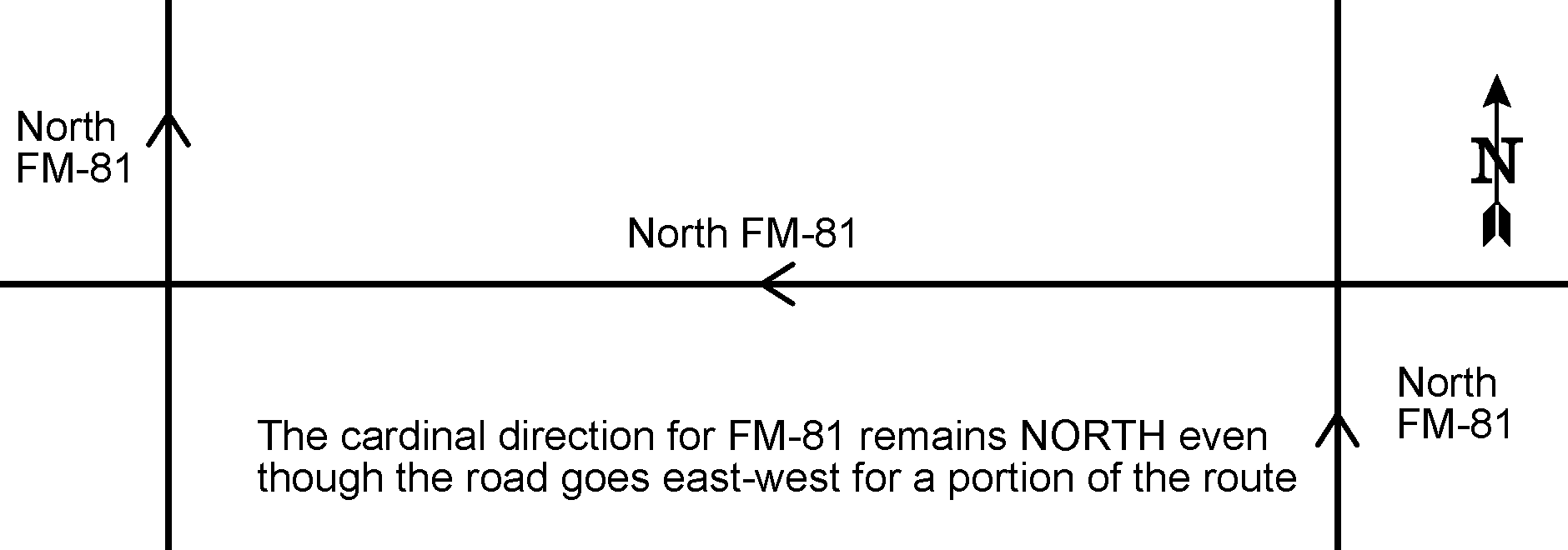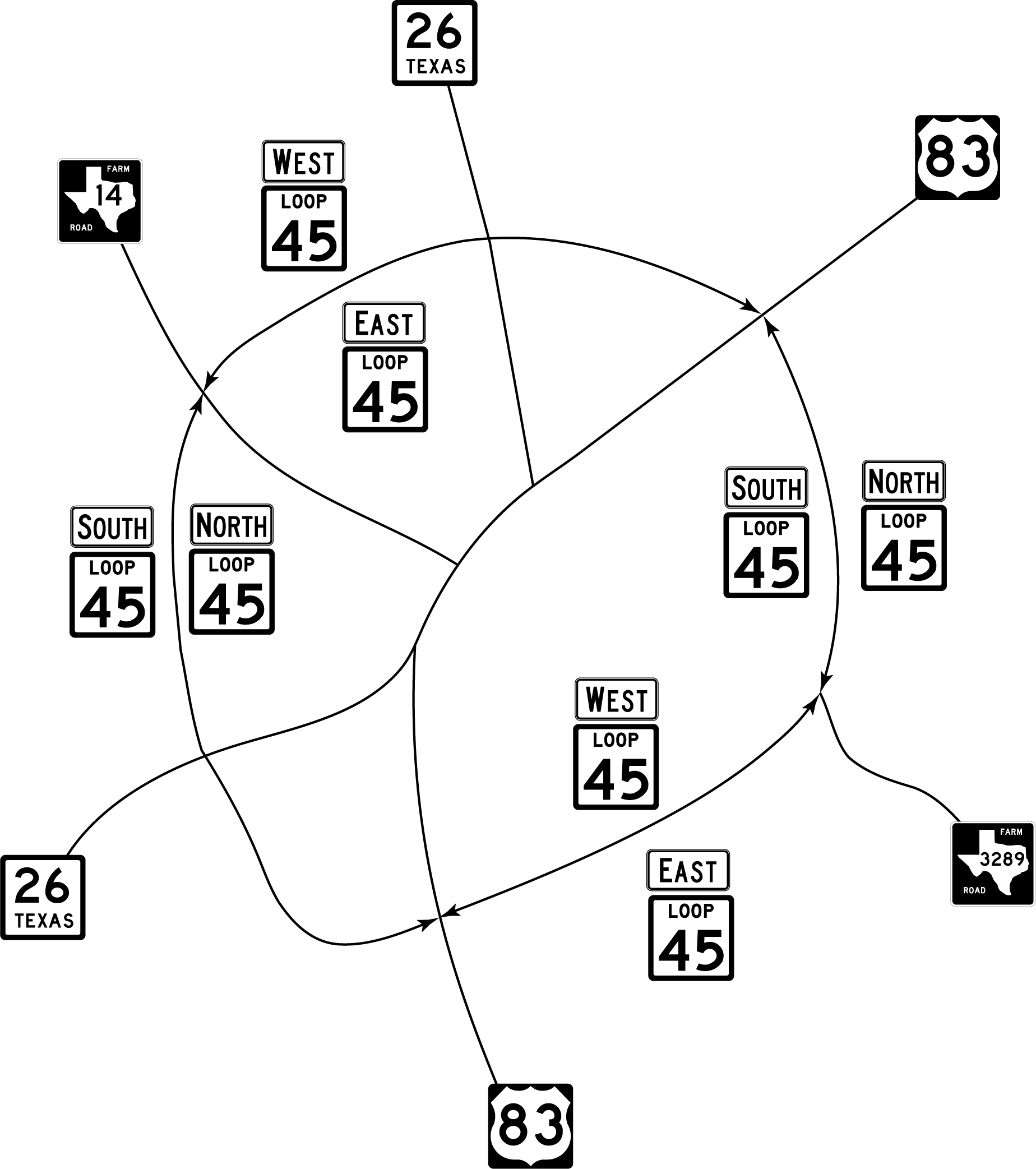Cardinal Direction Auxiliary Signs (Texas MUTCD 2D.15)
Purpose:
Cardinal Direction auxiliary signs indicate the general direction of a route. A Cardinal Direction auxiliary sign is mounted above the route sign(s) to which it applies. Figure 3-6 illustrates Cardinal Direction auxiliary signs.Special Notes for Cardinal Direction auxiliary signs:
- A Cardinal Direction sign should be used with a route sign except in a Reference Marker assembly.
- Cardinal Direction auxiliary signs use the larger initial letter design shown in the Texas MUTCD as shown in Figure 3-6.
- The cardinal direction shown in the auxiliary sign may be different from the actual compass direction of travel on that direction. Each highway has a designated cardinal direction for the highway. For consistency purposes, the cardinal direction for someone traveling on a route should be the same throughout the length on one direction of the highway. Figure 3-7 illustrates how a cardinal direction should remain the same on a highway regardless of the compass direction of travel. Cardinal directions for state routes are established by the Texas Transportation Commission at the time of its original designation. Contact TxDOT’s Transportation Planning and Programming Division to determine the official cardinal direction for any route.
- For Interstate and U.S. Highways, even-numbered routes have east-west cardinal directions, and odd-numbered routes have north-south cardinal directions unless the highway is a loop. A loop may use multiple cardinal directions as indicated in Figure 3-8.
- For all other classes of highways, there is no relationship between the cardinal direction and the route number.
- For highways not on the Interstate or U.S. Highway system, the cardinal direction is based on the greatest north-south or east-west distance between the start and end point of the highway. If the straight-line east-west distance between the starting and ending point of a highway (statewide, not just in the district) is greater than the straight-line north-south distance, then the cardinal direction should be east-west for the complete length of the highway throughout the state.
- For a loop highway, for which there is no starting or ending point, the cardinal direction changes to be generally consistent with the compass direction. The changes in cardinal direction should occur at interchanges or intersections. Figure 3-8 illustrates an example of cardinal directions for a loop highway.

Figure 3-6. Cardinal Direction Signs

Figure 3-7. Relation between Cardinal Direction and Compass Direction

Figure 3-8. Assigning Cardinal Direction to a Non-Interstate Loop Route